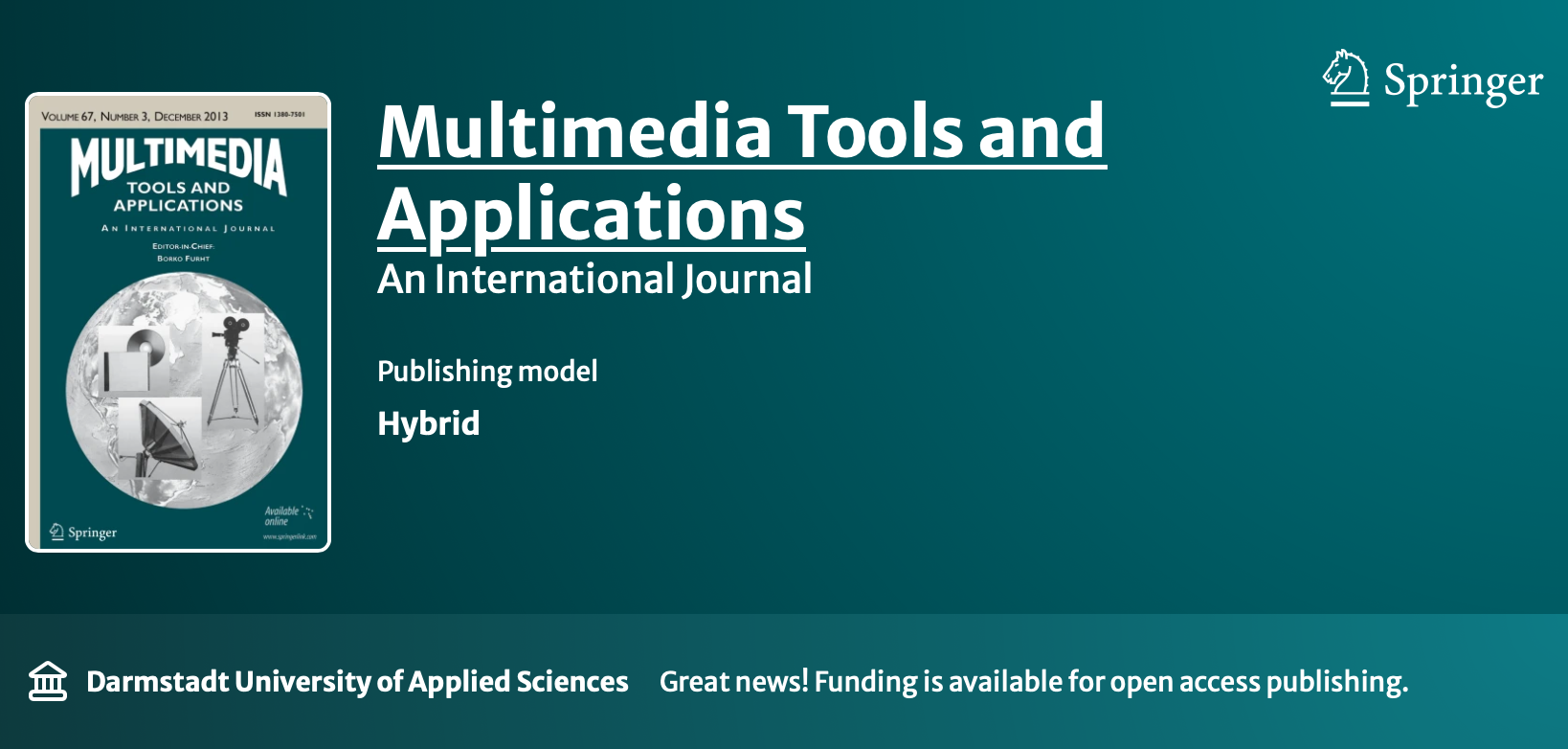

Call for Papers: Multimedia Tools and Applications
The empowerment of patients is emerging as a central focus in the digital transformation of healthcare. The integration of Artificial Intelligence (AI), Human-Computer Interaction (HCI), and Explainable AI (XAI) presents an unprecedented opportunity to develop transparent, intuitive, and patient-centered technologies. However, while AI advancements—such as Machine Learning (ML), Deep Learning (DL), and Natural Language Processing (NLP)—offer transformative tools for diagnostics, treatment, and personalized care, their complexity often limits patients’ trust, understanding, and engagement.
Patient empowerment relies on solutions that demystify complex AI-driven insights, fostering trust and enabling individuals to actively participate in their healthcare journey. Explainable AI (XAI) addresses this need by making AI outputs interpretable and transparent, ensuring patients can comprehend and trust the information being presented. Combined with HCI principles, XAI-enabled multimedia tools—such as medical videos, images, interactive dashboards, wearable devices, and virtual health assistants—make health data more engaging, accessible, and actionable.
This Special Issue explores how the convergence of AI, HCI, and multimedia technologies can empower patients through tools that improve health literacy, facilitate informed decision-making, and foster collaboration with clinicians. By prioritizing patient trust, transparency, and accessibility, these innovations aim to transform healthcare into a truly inclusive and empowering experience.
Goals of the Special Issue
- Highlight innovative multimedia tools that prioritize patient empowerment through AI, HCI, and XAI.
- Explore how explainable systems improve patient understanding, trust, and engagement with healthcare AI solutions.
- Address the design challenges of creating inclusive, ethical, and patient-centered multimedia applications.
- Foster collaboration among researchers, multimedia experts, clinicians, patients, and caregivers to build empowering healthcare solutions.
Topics of Interest
We invite original research, reviews, and case studies that focus on patient empowerment through AI, multimedia, XAI, and HCI. Topics include, but are not limited to:
Explainable HCI for Multimedia-Enhanced Patient Tools
Patients are empowered when they can access and interpret their health data easily. HCI and XAI can enhance multimedia applications that present real-time, personalized, and actionable health information.
- Transparent Wearable Interfaces: Devices that clearly explain health metrics through intuitive, XAI-driven feedback.
- Interactive Health Apps: Multimedia platforms providing explainable and personalized recommendations for managing patient health.
- AI-Powered Virtual Health Coaches: Conversational agents offering clear, actionable advice for disease prevention and management.
Explainable Diagnostics and Patient-Centered Interfaces
AI diagnostics must empower patients by making complex information digestible and actionable. Tools designed with XAI and HCI principles can help patients make sense of medical insights.
- Patient-Facing Diagnostic Tools: Multimedia systems with explainable imaging/video insights that clarify diagnoses.
- HCI-Driven Medical Visualizations: Interactive tools to simplify lab results, imaging reports, and AI predictions.
- Multimodal Patient Interfaces: Combining visuals, text, and interactivity to explain complex medical concepts intuitively.
HCI and XAI in Mental Health Management
Mental health tools must empower patients to recognize and manage their well-being. Transparent and explainable AI systems can improve accessibility and trust.
- Mental Health Apps: Multimodal platforms with explainable insights into emotional and behavioral data.
- Transparent Behavior Analysis: XAI systems for early detection of mental health risks through video and audio analysis.
- Accessible Neurofeedback Tools: Patient-friendly cognitive tools that explain therapeutic results in simple terms.
Trustworthy and Ethical XAI for Healthcare Multimedia
Empowerment requires trust. Human-centered design and ethical frameworks ensure multimedia AI tools are transparent, fair, and inclusive.
- Trust-Building Design: Transparent AI systems that prioritize accountability, fairness, and clarity.
- Bias Mitigation: Inclusive multimedia tools that avoid biases and serve diverse patient populations.
- Explainability and Privacy: XAI frameworks that ensure patient data privacy while delivering meaningful insights.
Patient Education and Engagement Through XAI
Educational tools empower patients by improving health literacy and fostering engagement. XAI-driven multimedia platforms make complex health information clear, interactive, and engaging.
- Explainable Health Literacy Tools: Multimedia platforms using intuitive explanations to educate patients.
- Gamification for Health Behaviors: Interactive, multimedia games that guide patients in adhering to treatments and lifestyle changes.
- Tracking Patient-Reported Outcomes: Visual tools that explain patient health metrics in clear and accessible formats.
Technical and Multimedia Innovations for Healthcare
Technical innovations in multimedia AI systems can empower patients by offering engaging, explainable, and actionable healthcare solutions.
- Interactive Medical Tools: Systems for analyzing videos/images with intuitive XAI-driven insights.
- Multimodal Data Fusion: Combining wearable, sensor, and imaging data to provide explainable and engaging outputs.
- AR/VR for Patient Education: XAI-powered augmented reality tools for interactive health learning and surgical planning.
Ethical and Regulatory Considerations
Ensuring ethical transparency and regulatory compliance is critical for developing multimedia tools that empower patients without compromising privacy or fairness.
- Ethical Frameworks: Guidelines for fairness, transparency, and accountability in XAI-driven multimedia tools.
- Regulatory Compliance: Multimedia systems that meet global standards while empowering patients.
- Privacy-Aware XAI: Balancing data privacy with clear, meaningful, and actionable patient insights.
Enhancing Physician Support Through Integrated AI and Multimedia Solutions
Empowering physicians is essential to improving patient care. By leveraging explainable AI (XAI), visualizations, or advanced human-computer interaction (HCI), healthcare providers can access intuitive and actionable insights that enhance their diagnostic and decision-making processes while fostering better patient collaboration.
- Explainable Decision Support Systems leveraging AI and visual interfaces to aid physicians in making informed decisions for patients
- Multimedia and Visual Analytics for Clinical Use: Interactive dashboards combining patient data, imaging, and wearable metrics to streamline and clarify complex medical information.
- Collaborative Physician-Patient Interfaces: Tools designed to bridge communication gaps by integrating explainable patient insights with medical workflows, ensuring shared understanding and collaborative care.
Conclusion
This Special Issue aims to showcase how Explainable AI, Human-Computer Interaction, and multimedia innovations can converge to empower patients. By focusing on trust, accessibility, and clarity, these tools can transform patients from passive recipients into active participants in their healthcare journey.
We invite contributions that advance patient-centered solutions, ensuring that healthcare technologies are not only innovative but also empowering, inclusive, and impactful.
